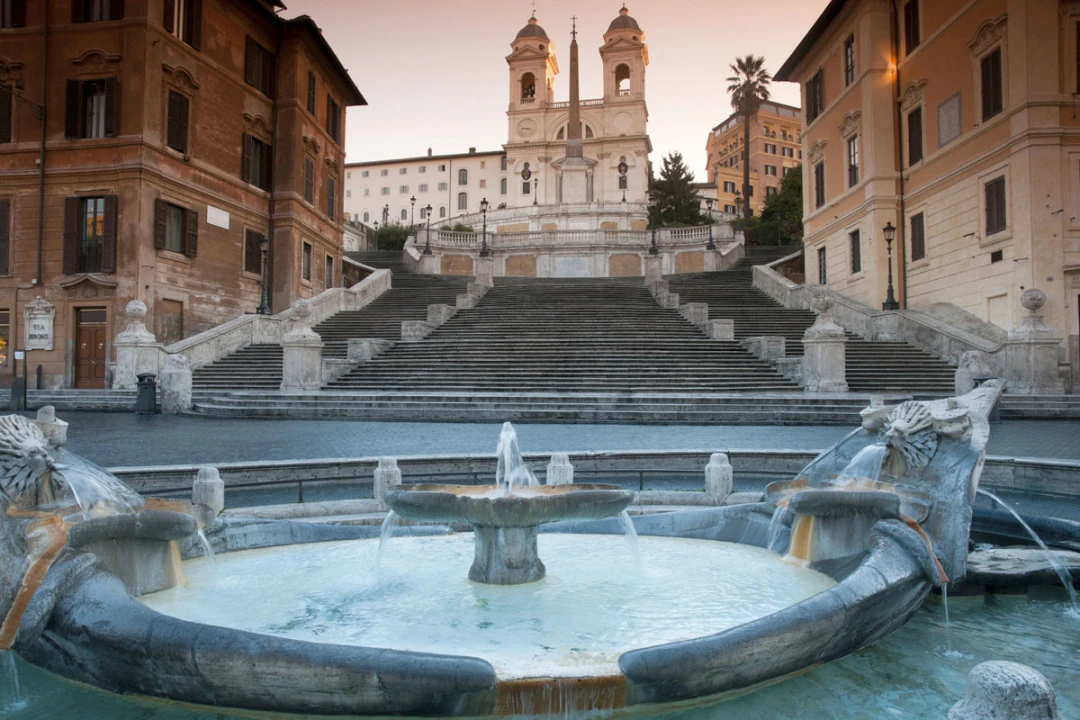For Rome’s tourists, the ancient fountains in front of the Spanish Steps, in Piazza Navona, that called Trevi and many others are the objects of ceaseless wonder and admiration. And Romans’ age-old relationship with their water is unique and eternal, given the majesty of their aqueducts and, above all, their fountains.
For the ancient Romans, water was indeed a gift from the gods, and every H2O source had its own tutelary god or nymph. Such supersition can be found as a component in numerous ancient myths, one being that of the nymph Egeria, lover and wife of Numa Pompilius, one of the seven Kings of Rome.
A fundamental of life, health and hygiene, water was the central-most element of that ancient Roman society that socialized at the baths.
In later centuries, the abundance of water in the Region of Lazio, channeled through the aqueducts, became a means for the Catholic Church to manifest its power on earth: still today we see the family crests of the most powerful Popes branded onto many a Roman fountain.
One among these is the "Fontana della Barcaccia" in Piazza di Spagna (right in front of the Spanish Steps, otherwise known as the Scalinata di Trinità dei Monti. The Barcaccia (1627-1629) is the work of Gian Lorenzo Bernini’s father, Pietro. The name Barcaccia refers to the legend that a boat (barca in Italian) was found in the Piazza after the River Tiber flooded in 1598.
Not far from here lies Piazza Barberini and the Fontana del Tritone, from 1643. Realized by Bernini the younger, it features four dolphins supporting Triton, who is blowing water through a shell.
Of course, Rome’s most spectacular and most famous fountain is the Four Rivers Fountain, also Bernini’s baby. The fountain represents – via four rivers – the four continents known at the time of its construction. We see the Danube, the Ganges, Rio della Plata and the Nile, veiled given the then lack of knowledge regarding its source. The fountain was built by Bernini’s apprentices at the center of the ancient Domitian Stadium, today’s Piazza Navona.
The monumental Trevi Fountain, then, is the fruit of long-running, discontinuous operations by various architectects, including Bernini; yet its actual completion is the merit of Nicola Salvi and Giuseppe Pannini, who put the finishing touches on the fountain sometime between 1732 and 1766.
At its center is a very large statue of the god Oceanus atop a shell-shaped chariot pulled by two of Triton’s horses. To each side of the god are the statues of Health and Abundance.
While the Fountain of the Naiads in Piazza Repubblica bears Glauco grasping at a dolphin at its focal point, the fountain’s name originates from the nude bronzes – the Naiads – that surround him. The work, signed by Mario Rutelli, was inauagurated in 1914.
Another fountain, less-famous, js tucked-away in Piazza Sant’Eustachio, near the Pantheon. Dating as far back as the Imperial Roman age, the fountain was part of Nero’s Baths complex; sculpted in granite, it was positioned next to the Senate of the Republic in 1987 to commemorate the anniversary of the Italian Constitution.
Finally, the Fontana delle Tartarughe or Fountain of the Turtles, stands in a cosy little square in Rome’s Jewish Ghetto. Designed by Giacomo Della Porta, it is an elegant structure in marble and bronze, with at its centerpiece youths or ephebes that hover over dolphins and conch shells, while at the same time encouraging the turtles into the basin above with.




